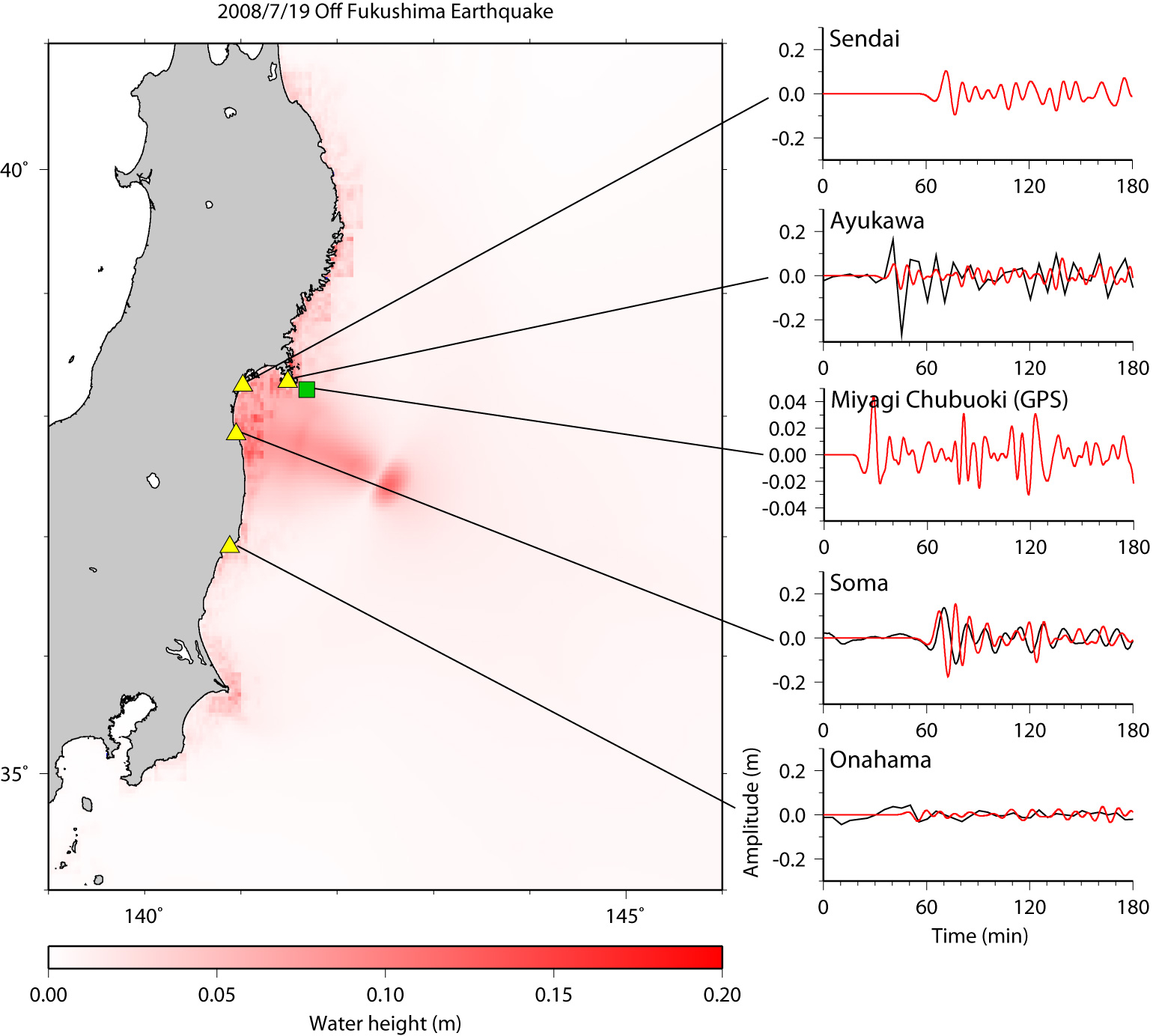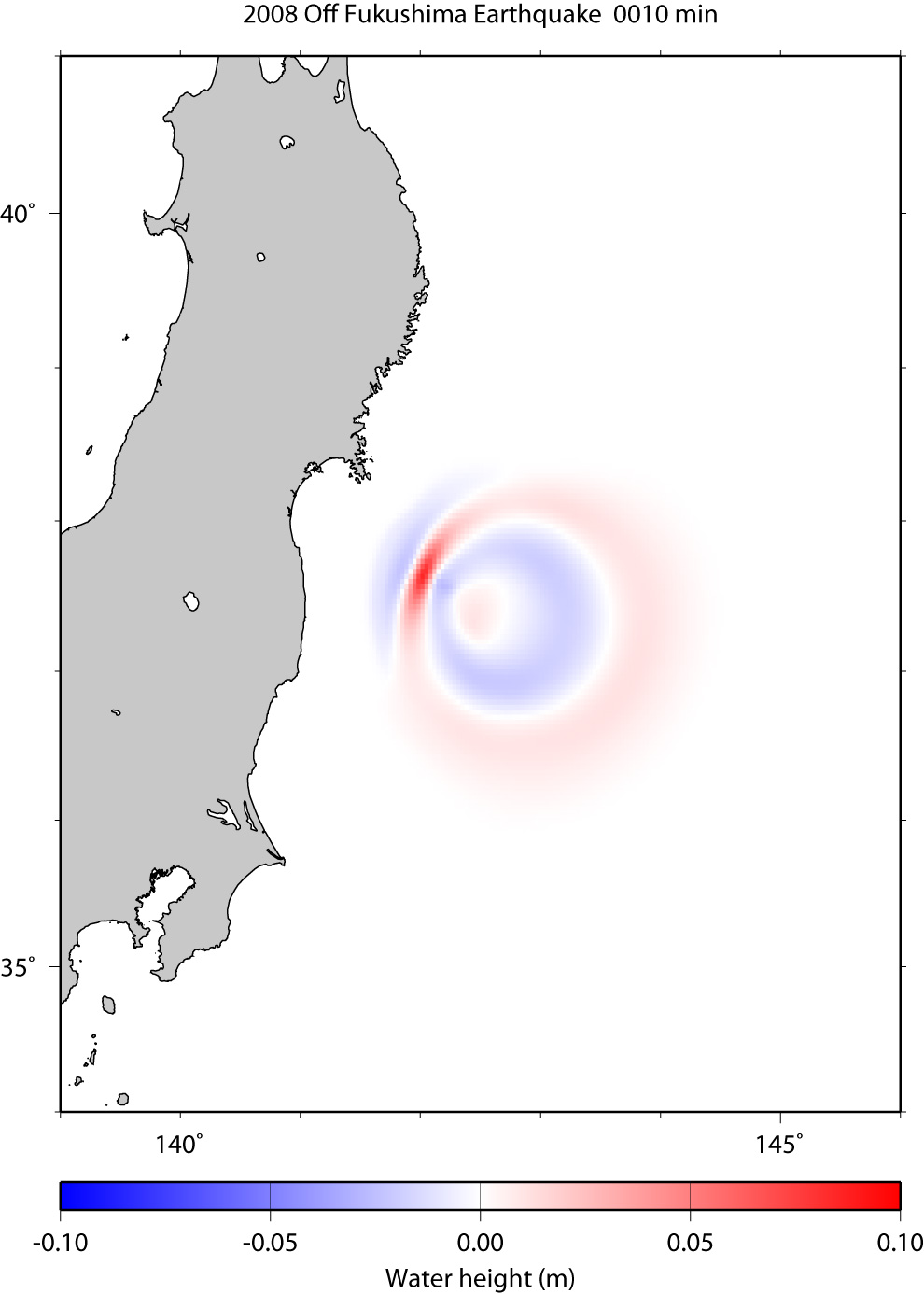| Off Fukushima, Japan Tsunami on July 19, 2008 |
We have simulated the tsunami generated by the earthquake off Fukushima, Japan (37.615°N, 142.115°E, M = 7.0 at 02:39:30 UTC according to USGS) on July 19, 2008. The assumed tsunami source is based on the body-wave moment tensor solution by USGS, which is strike = 216º, dip angle = 12º and slip angle = 100º. The fault size is 30 km × 15 km. Top depth of the fault is 15 km. Average slip on fault is 1 m. The seismic moment is 2.25 × 10**19 Nm (Mw = 6.8) assuming the regidity of 5 × 10**10 N/m**2. As the initial condition for tsunami, static deformation of the seafloor is calculated for a rectangular fault model [Okada, 1985] using the source model. The used bathymetry data is JTOPO30 resampled with 2' grid interval. We have adopted finer grid intervals of 24" with digital contour bathymetry data (M7000 series) around the tide gauge stations shown in Fig. 1. To calculate tsunami propagation, the linear shallow-water, or long-wave, equations were numerically solved by using a finite-difference method [Satake, 1995]. We have downloaded the tide gauge data from JCG's and GSI's web site and compared the simulated tsunami waveforms and observed ones (Fig. 2). We can see the tsunami propagation near the coast of Japan (Fig. 3).

Fig.1 Tsunami Source Model
The red contours indicate uplift, while the blue contours indicate subsidence with the contour interval of 0.05 m. Epicenters of the mainshock determined by USGS, NIED and JMA are also shown by blue, green and red star, respectively.

Fig.2 Maximum Height of Computed Tsunami and Comparison of Tsunami Waveforms
Solid lines in black and red indicate observed tsunami waveforms and synthtic ones, respectively.

Fig.3 Tsunami Propagation (Click to start GIF animation)
The red color means that the water surface is higher than normal sea level, while the blue means lower.
| by Yushiro Fujii (IISEE, BRI) and Kenji Satake (ERI, Univ. of Tokyo) |
|
|
| References |
|
Okada, Y. (1985), Surface Deformation Due to Shear and Tensile Faults in a Half-Space, Bull. Seismol. Soc. Am., 75, 1135-1154. Satake, K. (1995), Linear and Nonlinear Computations of the 1992 Nicaragua Earthquake Tsunami, Pure and Appl. Geophys., 144, 455-470. |
Last Updated on 2008/7/23